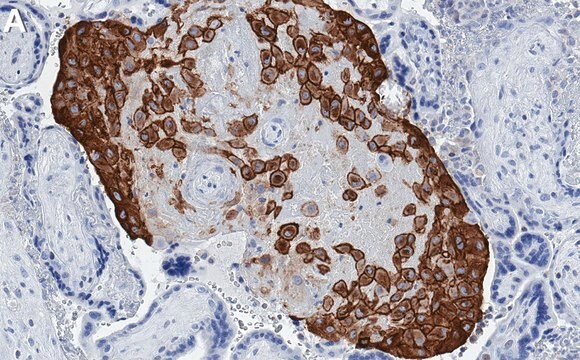FCMAB310A4
Milli-Mark® Mouse IgG1-k, clone MOPC-21, Alexa Fluor™ 488 conjugate
Mouse IgG1-k Monoclonal Antibody control validated for use in Flow Cytometry.
Iniciar sesiónpara Ver la Fijación de precios por contrato y de la organización
About This Item
UNSPSC Code:
12352203
eCl@ss:
32160702
NACRES:
NA.41
Productos recomendados
biological source
mouse
Quality Level
conjugate
ALEXA FLUOR™ 488
antibody form
purified immunoglobulin
clone
MOPC-21, monoclonal
species reactivity
human
manufacturer/tradename
Milli-Mark®
technique(s)
flow cytometry: suitable
isotype
IgG1κ
shipped in
wet ice
target post-translational modification
unmodified
General description
The MOPC-21 tumor line that produces mouse IgG1,k, is a mineral oil induced plasmacytoma. The product is originated and carried intraperitoneally in BALB/c mice. Identity and purity of the immunoglobulin is established by immunoelectrophoresis (IEP) and Ouchterlony Double Diffusion (ODD), prior to conjugation. Electrophoresis of the purified immunoglobulin, followed by diffusion versus anti-mouse whole serum, antimouse IgG1 and anti-mouse kappa chain, results in single arcs of precipitation. By ODD the purified immunoglobulin preparation is non-reactive with antisera to mouse lambda light chain, mouse IgA, IgM, IgG2a, IgG2b, and IgG3. The specificity of staining by monoclonal antibodies to human CD antigens should be verified by establishing the amount of non-specific binding to the target cell population. It is recommended that a non-reactive immunoglobulin of the same isotype, concentration and F/P molar ratio be included as a negative control for each monoclonal antibody reagent used in flow cytometry or other immunoassays.
Quality
Evaluated for use as flow cytometry isotype control using Jurkat Cells.
Legal Information
ALEXA FLUOR is a trademark of Life Technologies
MILLI-MARK is a registered trademark of Merck KGaA, Darmstadt, Germany
Storage Class
10 - Combustible liquids
wgk_germany
WGK 2
flash_point_f
Not applicable
flash_point_c
Not applicable
Certificados de análisis (COA)
Busque Certificados de análisis (COA) introduciendo el número de lote del producto. Los números de lote se encuentran en la etiqueta del producto después de las palabras «Lot» o «Batch»
¿Ya tiene este producto?
Encuentre la documentación para los productos que ha comprado recientemente en la Biblioteca de documentos.
Nuestro equipo de científicos tiene experiencia en todas las áreas de investigación: Ciencias de la vida, Ciencia de los materiales, Síntesis química, Cromatografía, Analítica y muchas otras.
Póngase en contacto con el Servicio técnico





